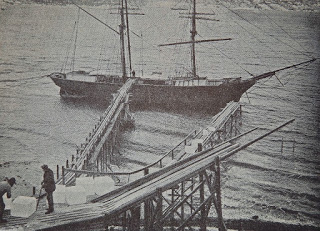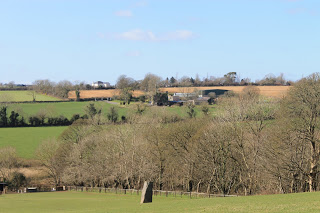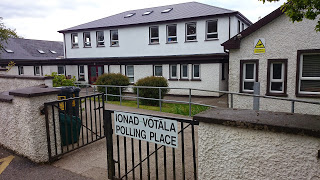Cheekpoint is both a village and a townland, and for many’s the year there has been two explanations to the origins of the name, a practical, geographical placename and what is probably best described as a romantic version. The name Cheekpoint derives from Pointe na Sige or in other cases Rinn na Sige. Sige, phonetically is pronounced “she-ge”.
According to Canon Power, and his book the Placenames of the Decies, the name derives from the river that flows past the village, and in particular the eddies and currents that are caused as the river flows over the Sheagh (pronounced she-egg) rock, which is an outcrop at the Mount, below the village. As the tide flows over the rock it causes a distinctive streak in the tide, which the learnered priest considered the origins of the placename, the point of the streaks. Its hard to discount the theory, as you can see from the photo a streak is very distinctive, and indeed locally we call this, to this day the Stroke. It’s slightly different to the streaks that are caused as the tide ebbs over the rocks. However it is easy to see where Canon Power was coming from, that the first settlers to the village would have come by water and would have named the landing point by a distinctive riverine feature.
 |
| Sheagh Rock and “the stroke” |
Against that however, is the fact that strokes can be seen in the river at various spots and at all different times of tide. And rocks and outcrops cause eddies and marks in the river at other locations too, such as the point light, Snowhill, etc. To be honest, to a fisherman there’s nothing too special about the river as it flows there, except for the strength and flow of tide.
Of course the romantics prefer a more elaborate origin. The gaelic Rinn na Sige may also suggest the headland of the fairies, or the fairy folk. Interestingly the Loganim site records a reference to “the landing place of the fairies” Si, Siog or Sidhe (which is very close to the phonetically spelled Sige above – “She-da”) suggests a connection to the other world or fairy folk, The Sidhe were a mythical people who were thought to have been the first settlers to Ireland and were defeated by the coming of the Gaels to Ireland. The disappeared into mounds or hills but emerge in times of need. Their ring forts and fairy paths still exist and to interfere with them is a cause of great harm to an individual. I was reared on such stories in the Russianside, particularly by our Granduncle Christy Moran who, if he didn’t believe the stories must have been a great actor.
Now the reference to a landing place provokes another speculation on my part. My cousin Jim Doherty passed on a newspaper article from the mid 19th C which attributed the coming of an ancient tribe to Ireland via the harbour and which landed at Cheekpoint. Cesaire, Granddaughter of Noah, built an ark to carry her and her lover Fintain and fifty followers. They left 40 days before Noah and at his direction sailed west. According to the story, they landed up after much adventures at Cheekpoint, at the confluence of the three rivers and there they settled. In time Cesaire died and was buried at the foot of the Minaun. The book of invasions has a similar story, but without Cheekpoint!
Is it possible that the placename Cheekpoint, anglicised but still retaining is older origins may hint at a much more ancient past, a past that includes remnants of the foundation story to the earliest settlers in this area? We may never know, but what I can say for certain, that the location which was of such strategic importance in the centuries past must have a lot stories yet to be brought to the surface.
I guess the version you prefer depends a bit on your personality. But as a certified romantic and dreamer, I have to say I tend towards the version that includes the Sidhe!















